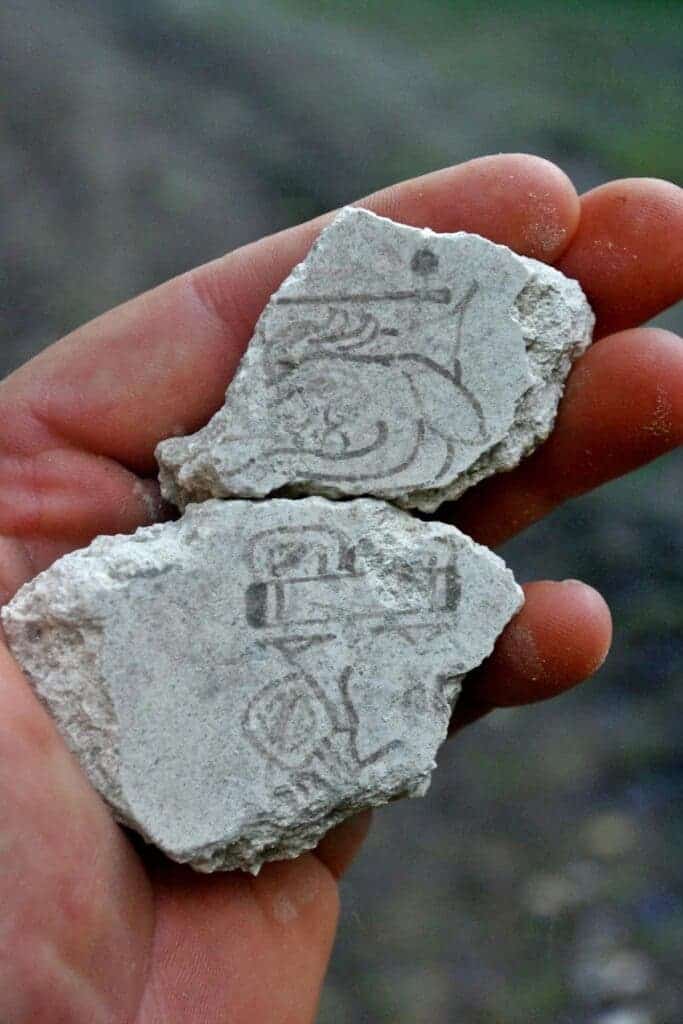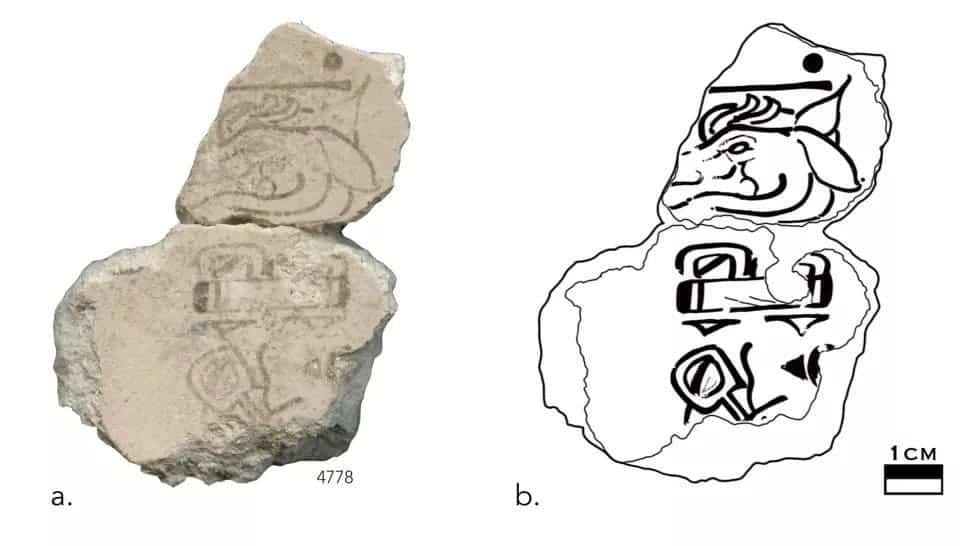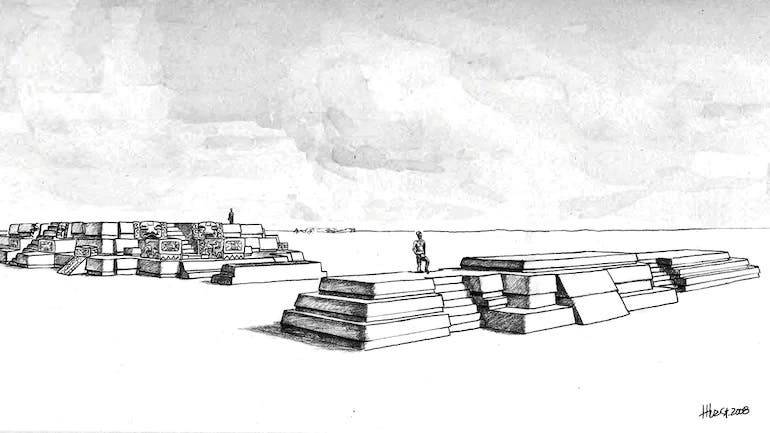Archaeologists were hard at work excavating the site of San Bartolo in Guatemala, at the base of a stunning ancient Mayan pyramid, when they found two pieces of plaster. Individually, these pieces of debris didn’t look like much, but when they were joined together, everyone was amazed to find they fitted, revealing a notation that archaeologists now claim may be the earliest evidence of a Mayan calendar.

The symbols painted on the two pieces that used to be part of a mural include a glyph representing a deer with a horizontal line with two dots over it, the Mayan mathematical symbol for the number 7. Together they form the notation “7 deer”, one of the days in the Mayan divination calendar.
The ancient calendar tracked time using two cycles: one 13-day cycle denoted by numbers and another 20-day cycle named after gods and supernatural beings. Since any given day has a specific number and divinity assigned to it, the calendar tracks 260 unique days.
Although odd by Western standards, this calendar was highly important for timing ceremonies and predicting the future. And it wasn’t just the Mayans who used it — the Aztecs, Mixtecs, Zapotecs, and other ancient cultures from the Americas adopted it as well.
Now’s probably a good time to mention that the Mayan divination calendar, also known as the Tzolkin calendar, is distinct from the Mayan Long Count calendar. The latter is not concerned with days, but rather counts the years since a mythical creation date that corresponds to August 11, 3114 BCE in the Proleptic Gregorian calendar. The last 5,125-year-long cycle of the Mayan Long Count ended on December 21, 2012, when you might remember cultists lost their minds due to the belief that the Maya calendar predicts a major cataclysm – nothing short of the end of the world.

Pre-Columbian cultures in the Americas additionally used a third calendar known as the Haab, a 365-day solar calendar divided into 18 months of 20 days each, with an additional month of only five days. The Tzolkin and Haab calendars together form the Calendar Round, which repeats at 52-year intervals and is still used in some parts of Guatemala.
The newly described fragments were likely part of a huge mural depicting the entire Mayan divination calendar on a platform at San Bartolo, designed to track both time and astronomical bodies like the sun, moon, the solar system’s planets, and important stars in the sky.
After they radiocarbon dated some charcoal found in the same layer as the fragments, researchers led by David Stuart at the University of Texas found the “7 deer” symbol was made between 300 BC and 200 BC. That’s at least a century older than the previous oldest evidence for a Mayan calendar.

San Bortolo, found in the remote jungles of northern Guatemala, has been excavated since 2001. The site is actually a massive complex where the Maya built structures on top of older ones over hundreds of years. As a result, the buildings are layered like an onion, and archaeologists have to tunnel deep in order to find the earliest structures and murals.
In total, researchers have found over 7,000 fragments of various murals since digs at San Bortolo first started. For the new study, researchers analyzed 11 wall fragments that were discovered between 2002 and 2012, including the two pieces that form the “7 deer” symbol.
“The wall was intentionally destroyed by the ancient Maya when they were rebuilding their ceremonial spaces – it eventually grew into a pyramid. The two pieces fit together and have black painted calligraphy, opening with the date ‘7 Deer.’ The rest is hard to read,” Stuart told Reuters.
Later editions of the Maya Tzolkin always denote “deer” by its word rather than drawing a glyph of the animal. To Stuart and colleagues, this suggests that they may have also found evidence of an early stage Maya script.
“We speculate a little bit in the article that it may be that this is an early phase of the writing system where they haven’t quite established the norms that we’re used to,” Stuart told Live Science.
The findings appeared in the journal Science Advances.









